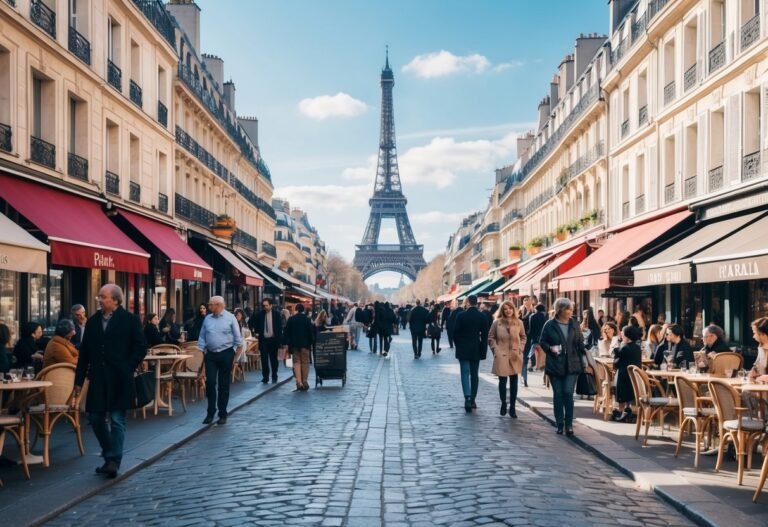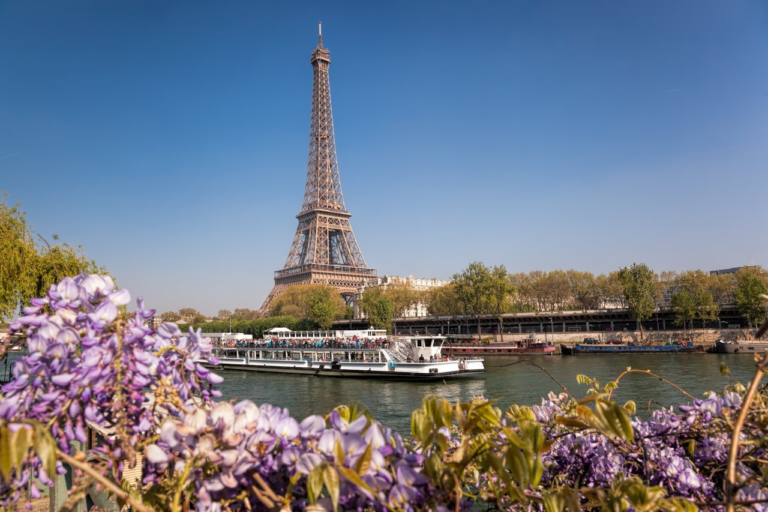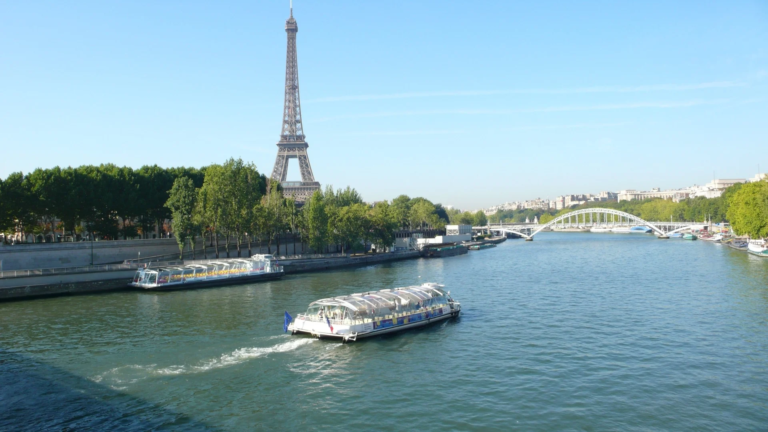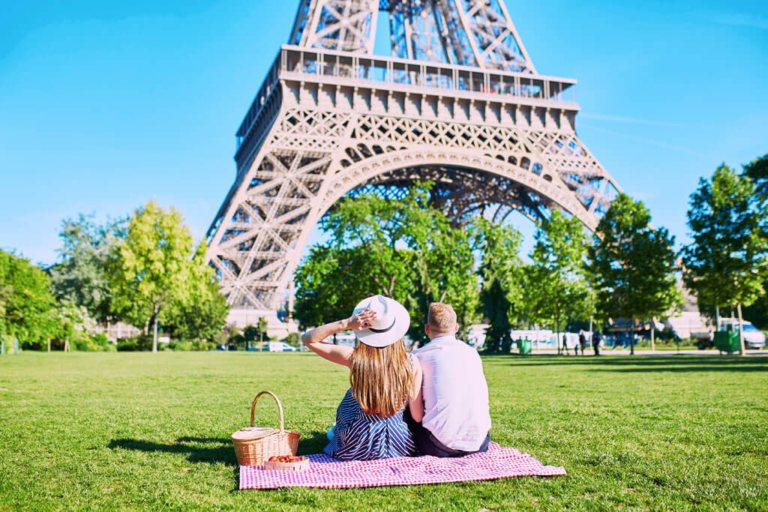Planning 3 days in Paris can be exciting and overwhelming. As someone who’s visited this enchanting city, I know which spots should be on your must-see list to make the most of this short trip.
In three days, you can explore iconic landmarks like the Eiffel Tower and the Louvre, soak in the beauty of the Seine River, and still have time for a leisurely stroll through Montmartre.
One of the magic moments starts as you watch the sunset behind the Eiffel Tower, painting the sky in shades of pink and orange. This iconic structure is not just about the view; it’s the feeling as you stand beneath it, part of a scene you’ve seen only in pictures. You’ll feel like a proper Parisian sipping coffee at a café near Notre Dame and wandering the charming cobbled streets.
A visit to the Louvre can be overwhelming due to its vast collection, but I found that focusing on a few key pieces, like the Mona Lisa and the Venus de Milo, enriches the experience.
You can also stop by the Palace of Versailles and bask in its grandeur and beautiful gardens outside the city. Knowing what to see and do within this time can transform an ordinary trip into a memorable adventure.
How To Spend 3 Days In Paris: A First Timers Guide And Itinerary
Paris is a city filled with iconic landmarks, rich history, and spectacular cuisine. For those visiting for the first time, a well-planned itinerary is key. Over three days, visit the Louvre, embark on a day trip to Versailles, and enjoy a picnic by the Eiffel Tower.

Day 1: The Louvre, Gardens, Arc de Triomphe & A Dinner Cruise
I kick off my adventure in Paris by visiting the captivating Louvre Museum. It’s an absolute must-see, renowned for its priceless art collections, including the iconic Mona Lisa.
As lines can get long, I ensure my tickets are booked in advance to maximize my time.
To start your Day 1 of your Paris adventure, here’s a suggested itinerary to make the most of your day:

Morning – The Louvre & Tuileries Garden
I recommend starting your first day early to beat the crowds and make the most of your time in Paris. Begin by visiting one of Paris’s most famous landmarks, the Louvre Museum.
With over 35,000 works of art and architectural gems, such as the iconic Leonardo da Vinci’s Mona Lisa and Venus de Milo, this vast museum is easy to spend hours exploring.
Afternoon – Arc de Triomphe & Champs-Élysées
After exploring the museum, stroll through the adjacent Tuileries Garden, one of Paris’s oldest and most beautiful public parks. Climb to the top for stunning city views, including the famous Champs-Élysées Avenue below.
Afterward, take a leisurely walk down the Champs-Élysées, lined with luxury boutiques and charming cafes.
Evening – Dinner Cruise on the Seine
End your day with a romantic dinner cruise along the Seine River. Enjoy delicious French cuisine while taking in breathtaking views of illuminated landmarks such as Notre Dame Cathedral and the Eiffel Tower.
Day 2: Day trip to Versailles + Dinner show
On the second day, I set aside time for a journey to Versailles. It’s a majestic palace with opulent rooms and meticulously designed gardens. The Hall of Mirrors is particularly striking, showcasing the wealth and power of the former French monarchy.
To start your Day 2, this is my recommendation:

Morning – Palace of Versailles
Start your second day with a trip to the majestic Palace of Versailles, a short train ride from Paris. Arrive early to beat the crowds and spend the morning marveling at the opulent architecture and grandeur of the palace rooms, including the Hall of Mirrors.
Afternoon – Gardens of Versailles & Petite Trianon
In the afternoon, wander through the sprawling gardens of Versailles. Don’t miss the Petite Trianon and the Queen’s Hamlet, which offer peaceful retreats and picturesque views. Consider renting a bike or a golf cart to cover more ground.
Evening – Montmartre & Dinner Show at the Moulin Rouge
Return to Paris and head to Montmartre, where you can explore the charming streets and visit the iconic Basilica of Sacré-Cœur. Cap off your day with an exhilarating dinner show at the Moulin Rouge, famous for its dazzling performances and vibrant atmosphere. Indulge in a decadent meal while enjoying a world-class cabaret experience.
Day 3: Montmartre & Picnic at the Eiffel Tower
I begin the final day in Montmartre, a vibrant neighborhood brimming with artistic history. Exploring the narrow streets, I find charming cafes and galleries. The Basilica of Sacré-Cœur offers a spectacular view over the city.
See my recommendation for your Day 3:

Morning – Notre-Dame Cathedral & Île de la Cité
Start your last day in Paris by visiting one of the city’s most beloved landmarks, Notre Dame Cathedral. Admire this famous cathedral’s Gothic architecture and intricate details, located on the picturesque Île de la Cité.
Afternoon – Eiffel Tower & Picnic at Champ de Mars
Next, go to the iconic Eiffel Tower, Paris’s most recognizable symbol. Ride up to the top for stunning city views, or have a picnic in nearby Champ de Mars while admiring this magnificent structure.
Evening – Seine River Cruise
End your trip with a relaxing evening cruise along the Seine River. While enjoying a glass of champagne, take in one last glimpse of Paris’s landmarks beautifully lit up at night.
Where to Stay in Paris?
Paris is divided into 20 arrondissements, each offering a unique city flavor. When deciding where to stay, consider the convenience and ambiance of different neighborhoods.

I recommend focusing on the central arrondissement, particularly the areas surrounding the main sites, like the Eiffel Tower and the Louvre, to make the most of your visit.
The 4th to 7th arrondissements are ideal for tourists as they are close to these iconic landmarks and provide a quintessential Parisian experience.
Other areas, such as the Marais in the 3rd and 4th, offer charming boutiques and cafes that I found delightful to explore.
Hotels in these neighborhoods provide a Parisian charm, often near attractions like the Notre Dame or Luxembourg Gardens. For more budget-friendly options, look to areas outside the central districts but within a quick metro ride from popular spots like the Tuileries Garden.
While it’s tempting to stay right in the heart, exploring neighborhoods 1-20 will allow you to experience the full diversity of the city, from its historical essence to its modern charm.
Getting Around + Map of the Sites
Transportation Options
Exploring Paris is straightforward, thanks to its comprehensive public transportation system operated by the RATP (Régie Autonome des Transport Parisiens). You can effortlessly reach the closest or farthest sites around the city with different options, including the metro, buses, trams, and RER trains.
During my visit, I found the metro the most efficient method, offering quick access across various arrondissements. With a Metro Paris Pass, you can swiftly move between significant sites. For tourists, I recommend purchasing the Paris Visite Pass, which allows unlimited travel on public transport at a fixed price.
This pass saves time and money, especially if you plan to visit multiple attractions quickly. To make your travels even smoother, I suggest downloading Google Maps. You can quickly determine the most convenient routes and schedules by entering your location and destination.
This approach helped me avoid getting lost and made my exploration of Paris enjoyable and stress-free. You can quickly determine the most convenient routes and schedules by entering your location and destination.
The Paris Pass
The Paris Pass is an invaluable tool for tourists who want to make the most of their visit to Paris.

This comprehensive city sightseeing package offers skip-the-line entry to over 60 attractions, including iconic landmarks such as the Louvre Museum, Sainte-Chapelle, and the Palace of Versailles.
By purchasing the Paris Pass, visitors can save time and money, avoid long queues, and benefit from significant discounts.
Additionally, the pass includes unlimited public transportation travel, simplifying navigating the city and allowing stress-free exploration.
Map of the Sites
This map highlights Paris’s must-see sites, including the Eiffel Tower, Notre Dame Cathedral, and the Arc de Triomphe. It also shows the proximity to other popular areas like Montmartre and Versailles.
Using this map as a guide, you can plan your itinerary efficiently and make the most of your three days in Paris. Ensure you also have time to wander through charming neighborhoods and try delicious French cuisine.
What to Pack for Your Paris Trip?
When preparing for a trip to Paris, it’s important to pack wisely to ensure a comfortable and enjoyable experience. Here are some essentials I recommend bringing along:
- Comfortable Walking Shoes: Paris is best explored on foot, and you’ll walk a lot. I always pack well-cushioned shoes to keep my feet happy throughout the day.
- Weather-Appropriate Clothing: The weather in Paris can vary, so check the forecast before you leave. I like to bring layers, such as light sweaters or a rain jacket, to adapt to any temperature changes.
- Travel Adapter: The power outlets in Paris may differ from those at home. I always pack a universal adapter to keep my electronics charged and ready.
- Scarf or Shawl: A versatile accessory, a scarf can add style to your outfit and provide warmth during cooler evenings. I always include one in my suitcase.
- Reusable Water Bottle: Staying hydrated is essential, especially with all the exploring you’ll be doing. I find carrying a reusable water bottle handy and environmentally friendly.
- Camera or Smartphone: You’ll want to capture memorable moments at famous sites like the Eiffel Tower or the Louvre. If you’re like me and love taking photos, ensure your device has enough storage and is fully charged.
- Basic French Phrasebook: While many Parisians speak English, I find it charming and often helpful to know a few basic phrases in French for a more authentic experience.
- Travel Guidebook: A reliable guidebook helps me discover hidden gems and plan my days around local attractions and cultural experiences.
Essential Paris Travel Tips

Planning your trip to Paris involves thinking about where to stay, how to get around, what to eat, and the best time to visit. Each aspect helps make your experience memorable, whether strolling through the Latin Quarter or savoring a fresh croissant.
Best Time to Visit Paris
Choosing the best time to visit Paris largely depends on your preferences for weather, events, and crowd sizes. Each season has unique charms and potential downsides, so planning accordingly can greatly enhance your experience.
Spring (March to May)
Springtime in Paris is enchanting as flowers bloom and the city awakens from the cold. The weather is mild during these months, with temperatures ranging from the high 40s to mid-60s (Fahrenheit), making it ideal for strolls across the city.
Nonetheless, rainfall is common, so packing a light umbrella is advisable. Spring is a popular time for tourists, particularly around Easter and during the annual Nuit des Musées, an event where many museums stay open late and offer free entry.
Summer (June to August)
Summer in Paris brings warmer temperatures, averaging in the mid-70s but occasionally climbing higher during heatwaves. Despite the sometimes sweltering heat, this season is packed with festivities and outdoor events.
The Paris Jazz Festival, Tour de France, and Bastille Day celebrations are just a few highlights. However, July and August see large crowds, and many locals head out of the city for vacation, which can alter the typical bustle. Consider booking accommodations and attractions well in advance if traveling during this time.
Fall (September to November)
Autumn in Paris is often celebrated for its beautiful colors as leaves turn golden and crimson, particularly in areas like the Jardin du Luxembourg. With cooler temperatures ranging from the 50s to 60s, it’s a comfortable time for exploring on foot.
Tourists significantly lessen after the busy summer, providing a more relaxed atmosphere. Fall also hosts the Fête de la Gastronomie, a delightful event showcasing French culinary excellence.
Winter (December to February)
Winter in Paris is characterized by shorter days and chilly weather, with temperatures hovering in the 40s. However, the city sparkles with festive lights and decorations, offering a magical experience around Christmas and New Year.
The Paris Christmas Markets are not to be missed. They offer an array of artisanal products and holiday treats. While winter is the least crowded season, be prepared for potential closures or shorter opening hours at some attractions.
I recommend visiting in shoulder seasons for better rates and a lively atmosphere.
Final Thoughts
Exploring Paris for three days gives you a taste of its timeless allure and rich history. From the grandeur of the Palace of Versailles to the artistic charm of Montmartre, you’re bound to create lasting memories.
As you stroll the Champs-Élysées or marvel at the intricate details of Notre Dame Cathedral, you will be in awe and inspired.
Your journey may feel short, but it encapsulates what makes Paris enchanting. I encourage you to experience these 3 in Paris for yourself. Your adventure through the City of Light awaits your discovery, so book your trip and immerse yourself in all Paris offers.
Frequently Asked Questions
When planning a three-day trip to Paris, it’s important to prioritize top attractions, manage your time well, and enjoy a range of dining experiences. Here are some key questions and answers to help guide your visit.
What are the top must-see attractions to prioritize over a 3-day trip to Paris?
The Eiffel Tower, the Louvre, and Notre Dame Cathedral should be on your list. Also, consider visiting the Montmartre neighborhood for its artistic vibe and the iconic Sacré-Cœur Basilica. These spots offer a wonderful taste of the city’s history and charm.
How can I experience the best of Paris in 3 days without feeling rushed?
Plan each day with a mix of key sights and downtime. Use public transport to save time. Buy tickets in advance to skip lines at popular attractions like the Louvre and Eiffel Tower. This approach ensures you see the highlights while enjoying each moment.
What is a realistic daily budget for a visitor spending 3 days in Paris?
A daily budget of around 100 to 150 euros should cover meals, sightseeing, and local transportation. Costs can vary depending on your dining choices and shopping habits. Being mindful of your spending and opting for budget-friendly accommodations can make your trip more affordable.
Can you suggest a family-friendly itinerary for 3 days in Paris with children?
Visit the Eiffel Tower and Jardin des Tuileries for outdoor fun. Musée d’Orsay offers engaging art for kids. Consider day three at Disneyland Paris or a cruise on the Seine. These activities balance cultural sights with entertainment, keeping children engaged throughout the trip.
What are some off-the-beaten-path experiences to include in a 3-day Paris itinerary?
Explore the street art in Belleville or visit the atmospheric Père Lachaise Cemetery. Venture to Canal Saint-Martin for a peaceful walk or picnic at Parc des Buttes-Chaumont. These unique spots offer a different perspective on Parisian life.
What are the recommended dining options for someone spending 3 days in Paris?
Try traditional French cuisine at Le Marais or enjoy pastries at a patisserie in the Latin Quarter. For a budget-friendly meal, consider a café near Montmartre. Dining along the Seine provides a romantic setting with great views, pairing Parisian ambiance with delightful food.



